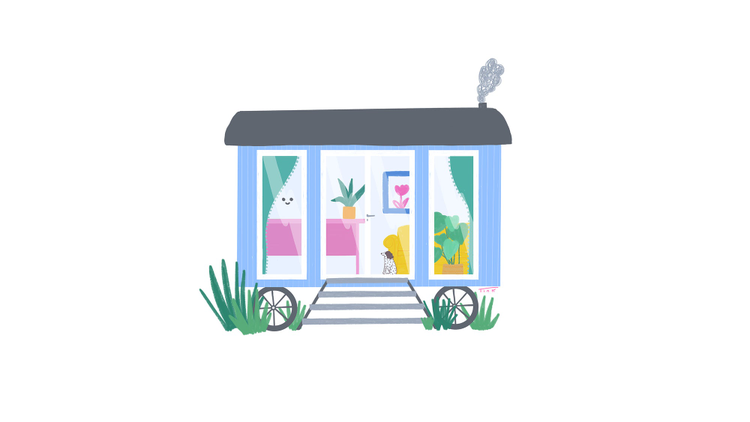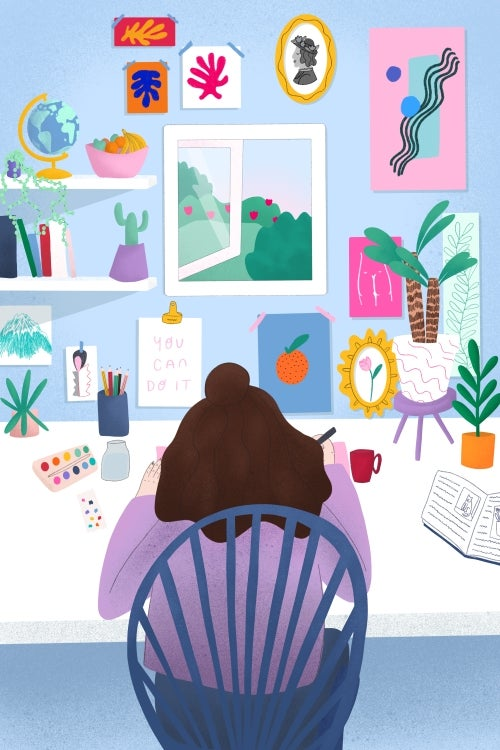
Q: What is Adobe’s Creative Residency Programme and how has it helped you in your career?
The Creative Residency is a year-long programme funded by Adobe where artists from different disciplines can work on a dream creative project. For me, it’s meant I’ve been able to spend the year turning my experience with mental health into the cornerstone of my career as an illustrator. It’s so important for me to not only find my niche but to make work that really fulfils me, and this does.
I’m leading a workshop at Adobe MAX this year on my Creative Residency project, The Joyful Everyday. I believe that we can find happiness in the lives we already have, and this is something I’m spending the year exploring through illustration. The Residency has opened doors and made introductions I could never have made on my own. Perhaps most importantly, being a Creative Resident has given me confidence in my work and in myself as a creative entrepreneur, and the time and space to figure out what kind of work I want to be known for.
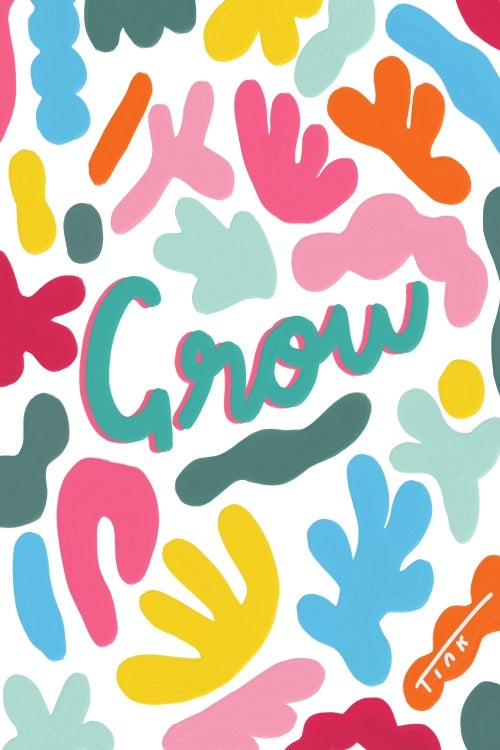
Q: How did you come up with your Adobe Creative Residency project theme, The Joyful Everyday?
I was fortunate enough to have got to a place with my illustration where I was earning money from it, both from commissions and running a shop on Etsy. When I heard about the Creative Residency, I sat with a blank piece of paper and thought about what I wanted to be doing in my career in the next five years.
I’ve been dealing with my mental health for over a decade, and it quickly became apparent to me that I wanted to make that part of my identity a bigger part of my career. It’s also incredibly important to me to talk frankly about my experiences and about the things that have helped me. The Joyful Everyday is about being able to find happiness in the minutiae of everyday life – the small, often overlooked things. So, my project is based on my appreciation of the beautiful, ordinary, everyday!
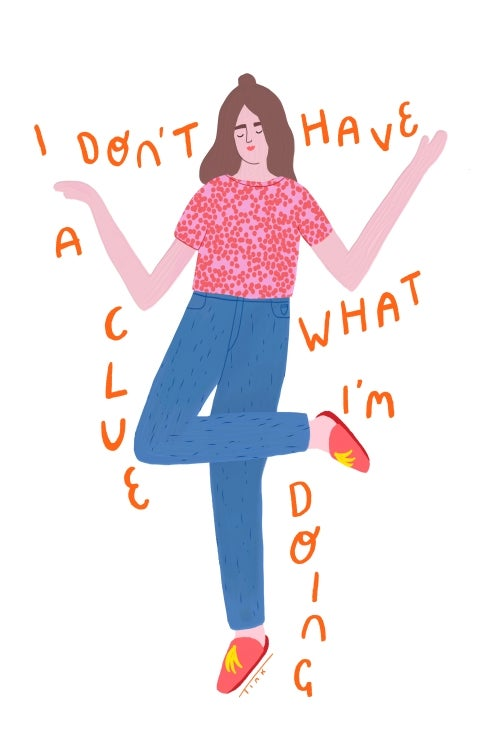
Q: What parts of your own daily routine have inspired your project theme The Joyful Everyday?
I have always loved ‘things.’ My parents run an auction house selling antiques, so growing up I was constantly surrounded by trinkets and lovely objects. This translates into my life now – my studio is filled with beautiful objects, a lot of which are functional, but also slightly odd, or unusual. I love making observational drawings, so often I will draw things like the leopard-shaped planter on my desk, the old wine bottle I have as a candlestick, the shelves covered in plants and decorative knick-knacks. More than that though, I love surrounding myself with colour. I use the word maximalist to describe my illustration style, and this translates to my real life as well.
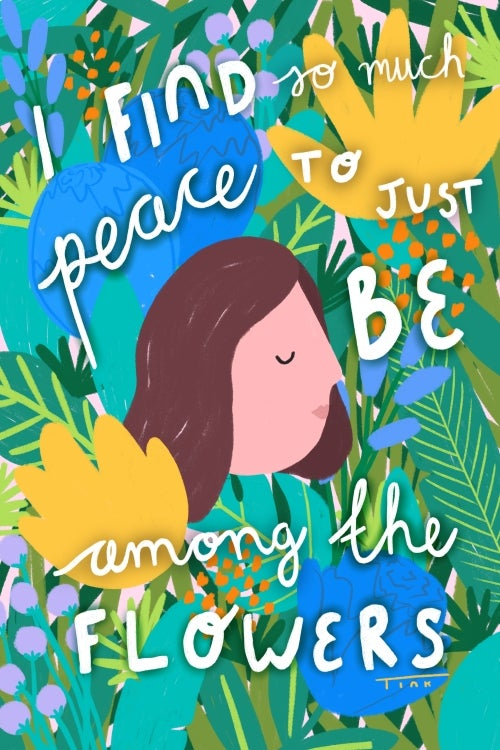
Q: You’ve mentioned that illustration became an obsession for you. What was it that made it so addictive?
I moved from London, where I studied and lived for five years, back to my childhood home in Dorset a few years ago after I suffered a mental breakdown. I got to the point where I wasn’t overpowering my depression and anxiety, they were overpowering me. One of the most confusing symptoms was that I had a total lack of enjoyment in anything. Films I’d seen a thousand times before would prompt zero response emotionally. I just felt numb. I’d always been creative, and so I started trying out different crafts such as knitting, crochet and felting.
But when I picked up a pencil, I quickly realised that I was enjoying it, and the rush I got, and still get, from it was addictive. I hadn’t drawn since doing my art GCSE, so when I stumbled across it again almost a decade later, I never expected it to become a major part of my life, let alone a career. But I’m so grateful it has.
Q: You’ve described illustrating as being ‘therapeutic.’ How has it helped your mental health?
I started drawing again as a form of therapy, to help with my clinical depression and severe anxiety. I was so unwell that at times I wondered if I would ever be able to work again. Building my career around something that helps me when I’m at my lowest feels like the most sustainable thing I could do.
This helps my mental health almost every day, which is great as that’s how often I still deal with it. I also get so much from talking to people about their mental health through my work. Every time I post something about how I’m feeling, or how I’m doing, I get an outpouring of not only support, but people saying that they’re going through exactly the same thing. Knowing that I’m not alone in my struggles means so much. And knowing that by sharing my experience I’m helping other people not feel so alone means even more.
**
Q: What would your advice be to young creatives who are struggling with their mental health?**
That there are people out there who not only get you, but care about you. All you have to do is find those people and be as honest as you can with them. You have so much more strength than you realise, and if you could just use a tiny bit of it to talk honestly and openly with the people that matter to you, the benefits will be exponential. It’s so important to talk about how you’re feeling, and to seek help if you need it. If you don’t feel as though you can talk about it with those around you, the charity Samaritans in the UK is wonderful. They run a 24hour helpline and will listen to you with no judgement, bias or opinion.
I’m also a huge supporter of talking therapies but it’s important to get the right therapist. I saw eight or nine before I found my current one. Think of it like finding a proper best friend – just because you sit next to someone, it doesn’t mean you’ll get on.
Above all else though, make sure you are being kind to yourself. Make sure you’re getting enough sleep, eating three times a day, not saying yes to everything. Listening to what your body needs is crucial in any recovery. And if you aren’t doing any of those things, make sure to give yourself a break! No one is perfect and we’re all just doing our best. Whatever that looks like to you is totally valid.
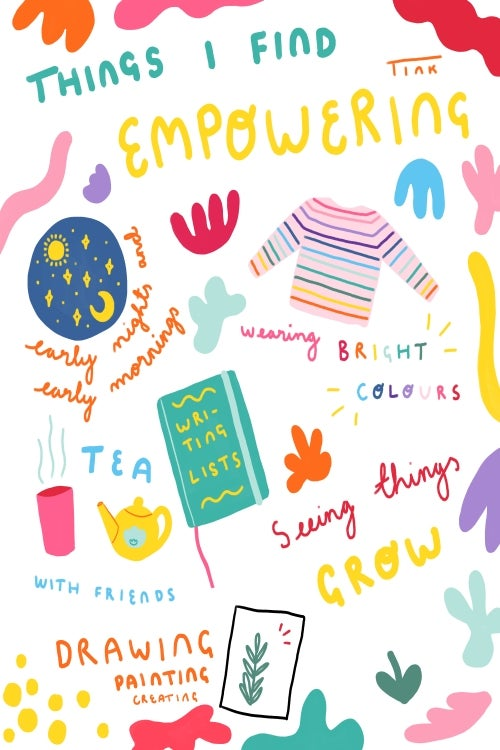
Q: How does your mood affect your illustration?
I’m lucky that I have my work to use as an outlet for my feelings. So, whether I’m feeling happy, sad, stressed, guilty, joyous, lonely or all of the above, it always comes out in my work. I spent far too long being a closed book not expressing myself and feeling the damage that caused me. So, you can bet that whatever my audience sees is how I’m feeling.
Q: How do you make sure to keep a work / life balance?
I’ve been juggling a lot of different projects, so have re-evaluated my time management and what my working day should look like. I’m a morning person and I think my equivalent of a 9-5 is actually a 7-3! I can’t make that happen every day, but recognising that everyone works differently has been really useful to me. I also have waves of energy throughout the day. I struggle with fatigue, due to both mental and physical health struggles, but often find that if I start struggling at around midday, the best thing I can do is to stick a film on and have a break for a few hours. Then I recharge my batteries and get a second wind.
Work life balance can be a bit elusive for creatives. Because I’m lucky that my passion is my job, and because of how accessible drawing is 24/7, whether on the iPad, my laptop, or sketchbooks, I find myself saying ‘I might as well do some drawing while I’m watching TV’ or whatever it is that I’m doing to unwind. Often this takes the form of drawing personal projects, instead of for products or commissions.
You can find out more about Octavia’s The Joyful Everyday project as part of her Adobe Creative Residency on her website, as well as more information on Adobe’s Creative Residency here.
